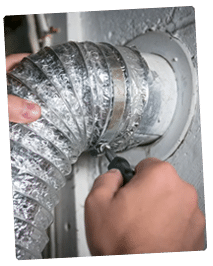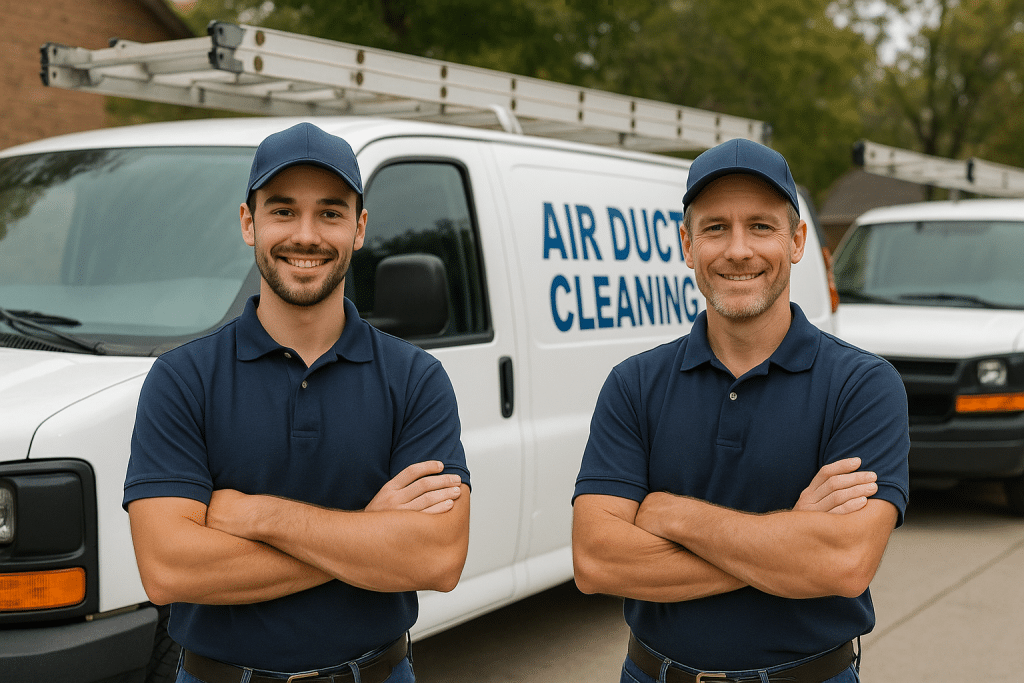Have you ever noticed a musty smell when you turn on your air conditioning? Or maybe you’ve spotted some dark spots around your air registers? You might be dealing with mold in duct vents. This common household issue can affect your indoor air quality and potentially cause health problems. Let’s talk about how to tackle this problem and get your air flowing clean and fresh again.
Why You Need To Remove Mold In Duct Vents
Getting rid of fungal contamination in your air system isn’t just about eliminating bad odors. When you have mold in duct vents, these microscopic organisms can trigger allergic reactions and respiratory issues for many people. When your HVAC system runs, it can spread spores throughout your home, affecting everyone who breathes that air.
Kids, elderly folks, and people with asthma or allergies are especially vulnerable to mold in duct vents. The presence of these contaminants can cause symptoms like coughing, sneezing, itchy eyes, and even more serious breathing problems. Plus, ongoing exposure might lead to chronic health conditions over time. Taking care of this issue promptly protects both your family’s health and your HVAC system’s efficiency.
Signs of Mold in Air Ducts: What to Look For
Spotting a problem early makes it easier to address. Here are some telltale indicators that fungal growth might be lurking in your air system:
- Musty, damp odors when the air conditioner or heater runs
- Visible dark spots around air registers or inside accessible portions of ductwork
- Increased allergy symptoms that seem worse when indoors
- Family members experiencing unusual headaches or respiratory issues
- Excessive humidity or moisture issues in your home
Beyond these signs, you might notice a thin layer of dust collecting more quickly on surfaces near vents. Sometimes, you’ll see discoloration on ceiling tiles or walls adjacent to air registers. These subtle clues often point to mold in duct vents hiding deeper in your system where you can’t easily see it.
When to Call Professional Mold Remediation Experts
While small areas of contamination might be manageable as a DIY project, certain situations call for professional help. If you suspect extensive mold in duct vents spanning more than ten square feet, it’s time to bring in experts. Similarly, if anyone in your household has severe allergies or respiratory conditions, professional cleaning is the safest approach.
Professionals have specialized equipment to thoroughly inspect and clean your entire system. They can access areas you simply can’t reach with household tools. They also use commercial-grade disinfectants that eliminate contaminants without damaging your ductwork. Most importantly, they follow proper containment procedures to prevent spores from spreading to other parts of your home during the cleaning process.

How to Prevent Mold Growth and Improve Air Qualityv
Preventing future problems with mold in duct vents starts with controlling moisture, the primary factor in fungal growth. Keep indoor humidity levels between 30-50% using dehumidifiers if necessary. Fix any leaking pipes or roof issues that might introduce water into your home. Regularly replace your HVAC filters every 1-3 months depending on your system’s requirements.
Consider installing UV lights in your HVAC system, as they can help eliminate microorganisms before they circulate through your home. Have your air system professionally maintained at least once yearly. During these checkups, technicians can spot early signs of moisture issues before they become bigger problems.
Adding adequate insulation around your ductwork can prevent condensation, especially in attics, crawlspaces, and basements. This simple step can significantly reduce the likelihood of mold in duct vents returning. Remember, maintaining clean, dry air passages is much easier than dealing with an established contamination problem later.
Faq
What are the common causes of mold in HVAC ducts?
The perfect environment for it to grow in ducts includes excessive humidity, poor ventilation, and condensation. Organic matter like dust provides food for mold growing inside your system. Check for visible mold around vents, musty odors when the air runs, and unexplained respiratory issues. Inspect accessible ductwork with a flashlight.
How can you get rid of mold in air ducts and is professional duct cleaning necessary?
For serious mold problems, professional air duct cleaning is recommended. DIY mold removal works for minor cases using antimicrobial cleaners and proper protective equipment. Professional duct cleaning ensures complete elimination of hidden contamination. Regular maintenance prevents future issues. Consider professionals if the affected area exceeds 10 square feet.
What type of mold typically grows in air conditioning systems?
Black mold, Aspergillus, and Cladosporium commonly grow in HVAC systems. When disturbed, spores circulate through your home. Exposure may cause allergies, respiratory issues, headaches, and fatigue. Regularly changing air filters helps reduce contamination. Immunocompromised individuals face greater risks from mold that distributes through your ventilation.

